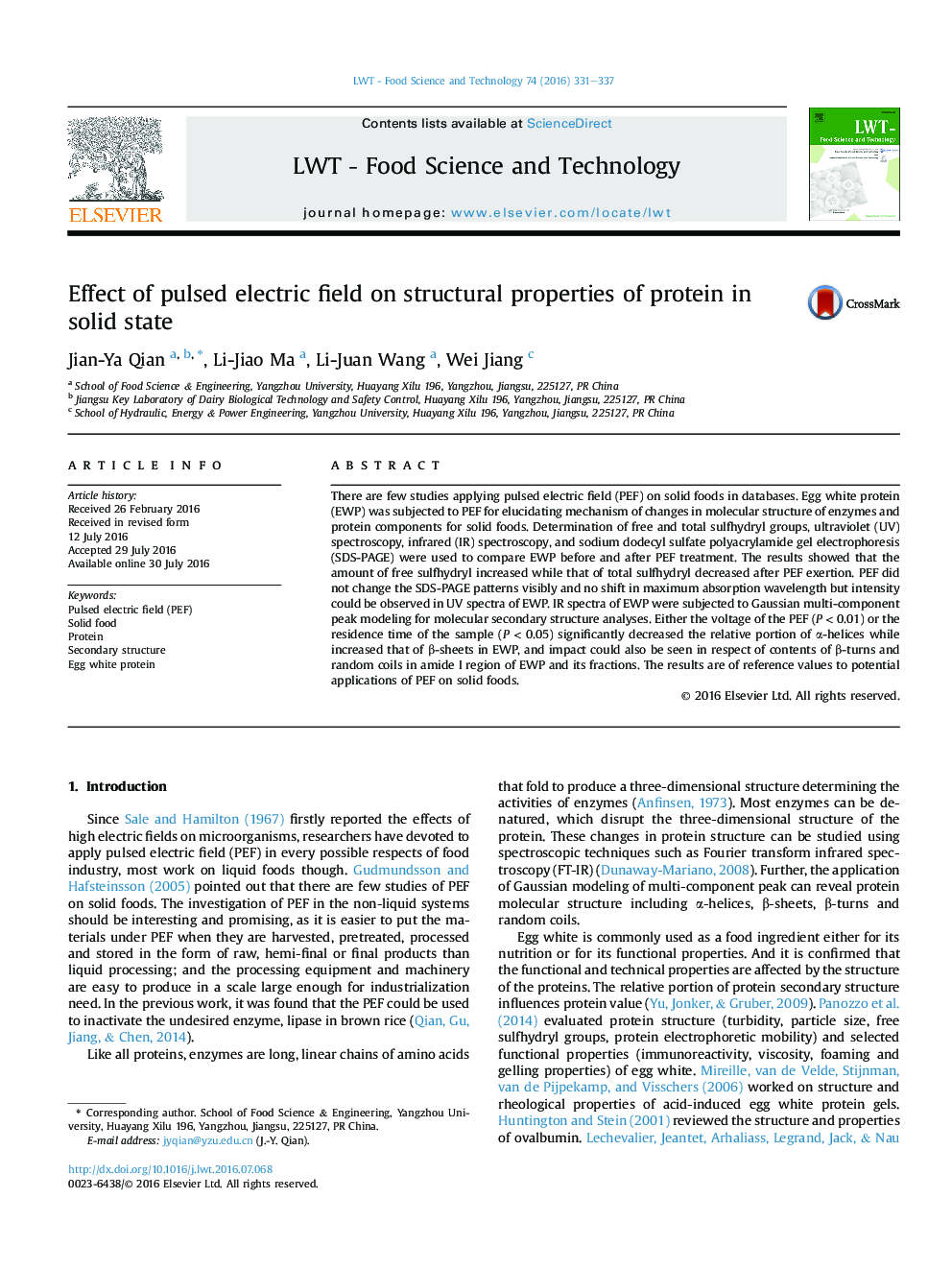| Article ID | Journal | Published Year | Pages | File Type |
|---|---|---|---|---|
| 4563467 | LWT - Food Science and Technology | 2016 | 7 Pages |
•Pulsed electric field (PEF) was applied to protein in solid state.•Protein secondary structure was investigated with infrared spectrometry.•Gaussian multi-component modeling was applied for secondary structure element analyses.•α-Helices and β-sheets in amide I of protein structure were affected by PEF significantly.
There are few studies applying pulsed electric field (PEF) on solid foods in databases. Egg white protein (EWP) was subjected to PEF for elucidating mechanism of changes in molecular structure of enzymes and protein components for solid foods. Determination of free and total sulfhydryl groups, ultraviolet (UV) spectroscopy, infrared (IR) spectroscopy, and sodium dodecyl sulfate polyacrylamide gel electrophoresis (SDS-PAGE) were used to compare EWP before and after PEF treatment. The results showed that the amount of free sulfhydryl increased while that of total sulfhydryl decreased after PEF exertion. PEF did not change the SDS-PAGE patterns visibly and no shift in maximum absorption wavelength but intensity could be observed in UV spectra of EWP. IR spectra of EWP were subjected to Gaussian multi-component peak modeling for molecular secondary structure analyses. Either the voltage of the PEF (P < 0.01) or the residence time of the sample (P < 0.05) significantly decreased the relative portion of α-helices while increased that of β-sheets in EWP, and impact could also be seen in respect of contents of β-turns and random coils in amide I region of EWP and its fractions. The results are of reference values to potential applications of PEF on solid foods.
